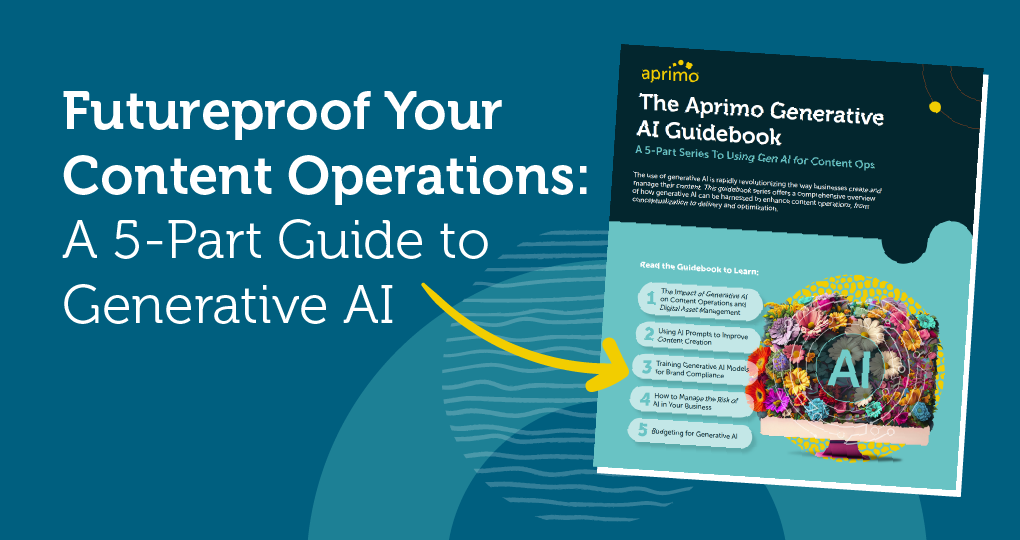Content Ops for Employee Training

Top-notch employee training depends on quality content, and a robust content ops system supports excellent branded content. Integrating content ops is an important step to strengthen any company’s training program. But what is content ops? In this article, we’ll look at what a content ops platform does and why it’s so crucial for scalable employee training.

Understanding the Significance of Content Ops in Employee Training
Content operations is a complete framework for planning, developing, and managing branded content. Its primary use is powering the customer experience, but it can also play a decisive role in employee training.
A content ops system provides engaging on-brand digital assets to training developers. It helps developers find the most appropriate and targeted materials for each learning unit, effectively reinforcing the brand’s strategy with each training initiative.
Branded content also increases employee engagement in the training process. Content ops makes it easier to find the most engaging materials and present them in a way that excites the trainee.
For example, suppose an organization wants to develop new onboarding content. The development team can source videos, infographics, and text blocks highlighting the brand’s appeal by accessing the company’s digital asset management (DAM) system.
The team strategically integrates that content to make the onboarding experience more exciting. Employees start their tenure with enthusiasm and a personal connection to the brand.
Strategies for Creating Impactful Learning Content
Effective training content is more than copied and pasted customer experience (CX) assets. It should align with employee development goals on the individual and organizational levels.
This goal requires development teams to analyze skill requirements for each position and team, matching those needs to employee skill sets. Training content should address common gaps and lay solid foundations for new employees.
Content ops also lets teams search for and integrate the most relevant content available, as adults learn best when they can identify a lesson’s relevance to their goals. The more closely an asset matches specific and explicit educational goals, the more engaging it will be.
Interactivity also improves engagement with the training process. Adult learners are task oriented and need a meaningful connection with a learning task, and interactivity provides both. Opportunities include:
-
Games and quizzes to check understanding
-
Short videos to illustrate concepts
-
Optional in-app practice sessions
-
Brainstorming on digital whiteboards
-
Assignments submitted for feedback
Branded assets connect these interactive elements with the program’s aesthetic, creating a more unified and on-brand experience for participants.


Optimizing Content Ops for Delivery and Accessibility
The next step in corporate training is delivering programs to the right people at the right time, using the most effective channels. By integrating training programs into content ops, teams can achieve each goal in less time and with less guesswork.
DAM platforms make this type of course delivery seamless and easily accessible. Employees may view a video on one platform, complete an exercise on another, and then interact with a tool they’ll use on the job.
Content ops also simplifies the creation of multimedia training materials, which optimize outcomes for people with different learning styles. For instance:
-
Visual learners benefit from infographics and illustrative images
-
Visual and auditory learners benefit from videos
-
Verbal learners benefit from articles and video transcripts
-
Kinesthetic learners can take quizzes and try assignments
The more elements a training program integrates, the more accessible it is for different types of learners. DAM systems make accessing and using many multimedia components easier for program creators.
Measuring the Effectiveness of Employee Training Content
Practical employee training generates a measurable return on investment (ROI). ROI may show up as reduced costs or increased revenue, but some programs pay off more indirectly or in the longer term.
Key Training Metrics
It’s essential to track a variety of employee training metrics, such as:
-
Course completion rate: The percentage of targeted employees who complete all training modules
-
Assessment scores and pass rate: How employees performed on quizzes, tests, or hands-on projects
-
Operational efficiency: Whether a training program results in less lost time or lost resources
-
Financial ROI: How much money the training generated or saved compared to the program cost
The right success metrics depend on a training program’s primary goals. For instance, picture a training initiative that teaches a new administrative best practice, ideally leading to better record-keeping and more valuable data. The goal would likely be universal implementation of the introduced practices.
The financial payoff would come later, but the training team wants to evaluate the program. In that case, course completion and understanding metrics would be appropriate.
Employee Feedback Loops
Participants can also provide valuable feedback on the effectiveness of training materials. All courses benefit from active feedback, which lets developers integrate learner commentary into future versions.
Content ops systems help teams track and record course feedback, including:
-
Comments about the clarity or engagement level of materials
-
Star ratings and other qualitative assessments
- Asset open and click rates
By organizing this quantitative feedback, content ops systems help teams gear training content to employee needs.


Best Practices for Scaling Content Ops in Employee Training
Content ops systems increase the scalability of employee training programs by simplifying and streamlining workflows, including those involved in content creation.
Content Development
Content ops streamlines content development at every level, from creating original assets to adapting existing materials. One of the most valuable tools is the modular content system, which turns content pieces into blocks that creators can take, reuse, edit, or deconstruct into component pieces.
When a relevant content module is available, content creators can easily search for it within the company’s DAM system. They might use it entirely or pull smaller pieces, such as a video clip or even something as simple as a logo.
DAM systems also save versions of each content asset so creators can make edits freely. If they want something from a previous version, they can grab it without starting from scratch. Of course, if they start from scratch, the DAM system will save that asset, too.
Collaboration and Editing in Content Ops Systems
Content ops also simplifies collaboration by streamlining internal communications. Using a quality content ops system, teams can review, edit, and approve training content quickly and without losing previous versions.
For example, imagine a recently released training program introducing a new sales technique. Initial feedback reveals that employees found it exciting but challenging to apply in real situations. The team responds to that information by adding new video content portraying a sales rep and prospect conversation.
Content ops provide the efficiency teams need to make these kinds of edits regularly so training content is as strong as it can be.




